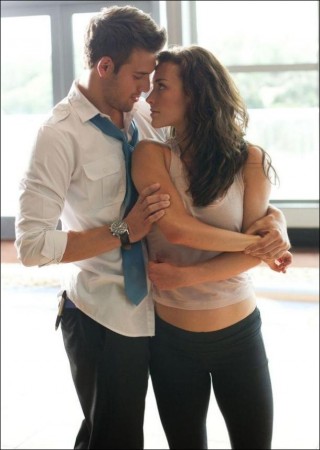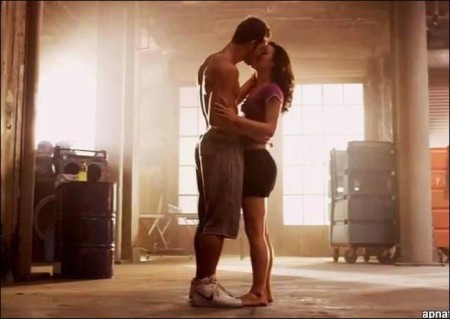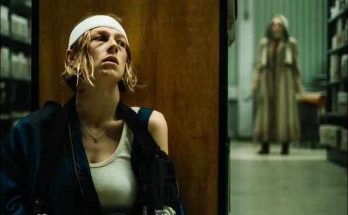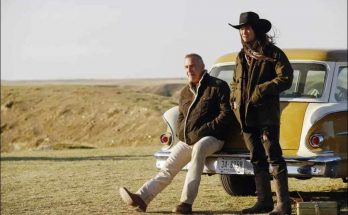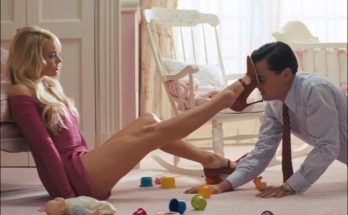Filmed entirely in the cities of Miami and Miami Beach, Step Up Revolution takes full advantage of South Florida’s unique and visually arresting locations, from the ultra-modern skyline and iconic palm trees to the gritty, colorful ethnic neighborhoods and serene beaches. “Setting the movie in Miami was one of the first choices we made,” says Smith. “It’s an American city, but a really sexy city with a long-established dance culture. It was the perfect locale.”
The area’s instantly recognizable backdrops telegraph glamour, youth and the contrasts at the heart of the film’s story. “Step Up Revolution is a love story set among the haves and have-nots of Miami,” Gibgot says. “Miami has an extremely wealthy population, as well as some of the most fabulous luxury hotels in the world. It’s an aspirational American city, a place where people experience wealth and glamour and excitement. In the movie, we see the contrast in the lives of the people who stay in those hotels and the people who actually live in Miami and serve them.”
Miami’s balmy climate and outdoor culture lend themselves to the wide-open vistas that the producers envisioned for their flash-mob settings. “We tried to incorporate as much of Miami as we could,” says Smith. “We built big, big sets and put lots of people on them. Whether it’s in the business plaza or on top of the containers or on Ocean Drive, we expanded the world of this movie in ways we never have before.”
Production Designer Carlos A. Menendez is a Miami native who knows and loves his hometown, and enjoyed showing it off in Step Up Revolution. “Miami is a magical city,” he says. “Geographically it’s stunning. It’s surrounded by water. There’s an interesting mass-transit system and bridges. The Port of Miami hosts containers from all over the world as well as the cruise liners that come and go. And you’ll never see skies like this anywhere else. The cloud formations are spectacular.”
It also has a uniquely Latin flavor, according to Menendez. “There’s a tremendous Cuban influence in Miami, obviously. But there is also influence from the rest of the Caribbean and South America. It’s a huge melting pot for all these cultures with a tremendous local music scene. There’s great music and great dancing on any given night.”
In no place is that more apparent than on the set for Ricky’s Club Habanero, the old school Miami club that Sean and Eddy have been going to since they were children. “This is not the kind of place you’d find out on Ocean Drive,” says Smith. “It has a sense of culture, and history. This is where these kids grew up and developed their eclectic musical taste. It’s the kind of place filled with families, old men playing dominos, guys playing various instruments there at night. It’s not South Beach, it’s Old Miami.”
Menendez infused the set with some of the city’s signature color and variety. “The walls are lined with photos and we’ve layered textures and color throughout. There is even a fivelayer diorama of Havana on the back bar.”
The fictional Miami Museum of International Art and Culture was created on a soundstage for the ambitious, multi-layered dance piece that first sparks Emily’s interest in The Mob. “The stage was pretty amazing,” says Smith. “We had a giant glowing jellyfish that descends into the middle of the museum. As it lifts its tail, you see the tutus of our electric ballerinas rising up. We have living sculptures, people who emerge from paintings, and all kinds of surprising artistic set pieces.”
And in anticipation of shooting the finale, Menendez fabricated a scale model of the shipping yard so that he, Speer, Sims and cinematographer Karsten “Crash” Gopinath could coordinate the scene before ever setting foot on set. “It was difficult pulling together all the different disciplines-choreography, cinematography, direction, stunts, parkour,” says Menendez. “I gave Jamal Sims tape dots so he could show us on the model where the dancers were going to be. He put them pretty much everyplace!”
Each container had a platform mounted and secured for the dances. “We even concealed a trampoline in a container,” Menendez explains. “In the end, what mattered most to me were safety and the dance. Those were the first two things on my checklist. The third was showcasing the most amazing views of Miami we could get. The arrangement of the containers was crucial. They were set to frame downtown Miami and Miami Beach in the background.”
The designer also had to keep in mind that the 3D cameras came with extra equipment that needed to be concealed. “Crash has a specific style of lighting, which is fantastic,” he says. “I have a specific design style. We worked it all out together. There were three 3D cameras with a tremendous amount of gear attached, which made it a whole different game than a regular movie. I was constantly trying to hide all of that.”
Speer had never shot in 3D before and credits Karsten and the film’s stereographer Nick Brown with guiding him though the process. “I had to learn to shoot in a different way than I would for conventional 2D,” he says. “But I was lucky enough to have an amazing crew.”
Dance lends itself naturally to 3D, says Brown, and the filmmakers were able to maximize that effect with innovative camera work. “Scott and Crash were very open-minded about trying new things and shooting in unconventional ways. We were able to create volume and depth that is totally comfortable to watch.
“We set shots up specifically to get the most out of the 3D medium,” he continues. “It’s not used for gag effect, like a hand sticking out in front of the screen. We’ve created moments that look really, really good. The choreographers had to be aware of creating layered dances, so we could get a lot of depth in the shot, but for the most part they choreographed the piece and then we figured out the best way to capture it in 3D using the camera positions and moves.”
Gibgot was amazed at how successfully the dances translated to the screen. “I didn’t anticipate the dance looking this good in 3D,” she says. “We were able to take specific moments in the choreography and utilize the 3D and the dancers to heighten the effect. It makes it a more exciting moviegoing experience, that’s for sure!”
With a fourth Step Up film now under her belt, Gibgot never ceases to marvel at the endurance and commitment of the performers who make them possible. “Dancers are the hardest-working people in the business,” says Gibgot. “They are one of the reasons I love making these movies. They don’t make a lot of money; they do it strictly for passion and nothing stops these kids. They love what they do so much that they show up every day excited to do it. It doesn’t matter what you throw at them¡ªand we’ve thrown a lot. In fact, even if the cameras aren’t rolling, they’re still dancing. They can’t stop themselves!”
Related Link: Step Up Revolution Movie Full Production Notes
Visits: 1009

